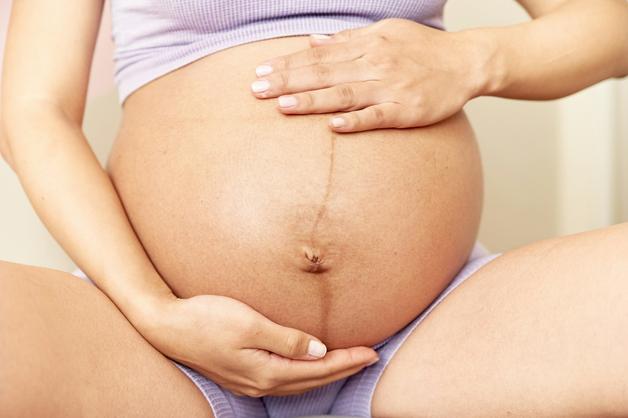“Cramping early pregnancy”—the term alone can spark a flood of questions and a ripple of apprehension. The positive test sits on the bathroom counter, excitement bubbles beneath the surface, but then a twinge, a flutter, a tightening sensation in the lower tummy emerges. Is it ordinary? Is it a warning bell? For many parents, these initial bodily changes summon both hope and, inevitably, a little worry. You might find yourself wondering if everything is progressing smoothly or searching for reassurance that such sensations are just part of the journey. The truth? Most cramping early pregnancy is rooted in the body’s complex adaptation to nurturing new life. Awareness of why it happens, how to manage it, and when to seek advice transforms uncertainty into confidence. Here, you’ll discover what science says about early pregnancy cramps, practical relief strategies, and signs that ask for swift attention.
Unraveling the Physical Origins: What Triggers Cramping Early Pregnancy?
You may ask—why does this discomfort appear so soon on the journey? The process unfolds as an intricate choreography of rapidly evolving anatomy and surging hormones. Implantation emerges as an early player: when the fertilized egg nestles into the rich lining of the uterus, it sometimes triggers fleeting, implantation cramping—a gentle sensation, perhaps a tingle, occasionally paired with light spotting that fades quickly.
But the spotlight quickly shifts to the impact of progesterone, an essential hormone surging after conception. Under its influence, the uterus begins its gradual expansion—ligaments and connective tissues stretch, adapting to a growing guest. Perhaps you notice fullness, tightness, even “pulling” in your abdomen. If you’re navigating this sensation after a hearty meal or during a stressful day, it might be your body’s way of adjusting to slower gastrointestinal motility (yes, constipation and bloating can become new companions).
For some, cramping early pregnancy feels like a tightening that ebbs and flows, while for others, it’s more sporadic—triggered by digestion, movement, or the shifting tides of stress.
Patterns, Perceptions, and Puzzles: How Early Pregnancy Cramps Manifest
Is it a subtle spasm or a more pronounced pang? Cramps can masquerade as menstrual sensations: dull, centralized, or with a lingering heaviness below the navel. Sometimes, round ligament pain claims the stage later, as the uterus continues to stretch, especially with physical movement or a sudden change in position. But in these early weeks, most cramping episodes arrive unannounced—brief pulses, not constant, and rarely severe.
Curious if there’s a pattern? Some parents map these sensations to mornings, to moments after standing, or during digestive upsets. Others barely notice them at all. One constant: cramping early pregnancy is as varied as the people who experience it—no single timeline or intensity rules apply.
Hormonal Highways and Digestive Detours: The Science Behind the Discomfort
Let’s delve a layer deeper. Post-ovulation, progesterone surges. Its mission is clear: maintain the uterine lining and relax the uterus to prepare for pregnancy. Yet, this hormone doesn’t work in isolation. It also relaxes smooth muscle tissue—your intestines included. As digestion slows, symptoms like bloating, intestinal gas, and altered bowel movements (think constipation) become more likely. Each of these can send waves of discomfort—sometimes sharp, sometimes subtle—across the lower belly.
Additional contributors? Low dietary fiber, a marked drop in physical movement (common as fatigue sets in), and emotional stress—all can intensify cramping early pregnancy. Some researchers even note a link between heightened abdominal nerve sensitivity and psychological stress, magnifying minor discomfort.
When to Stay Vigilant: Differentiating Normal from Concerning Signs
A pressing question for many parents: when is cramping early pregnancy typical, and when does it require action? Most cases, especially if short-lived and mild, signal healthy change. However, sounding the alarm is necessary in certain scenarios. What should raise your eyebrows?
- Severe, continual, or asymmetric pain (notably on one side)
- Heavy vaginal bleeding or ongoing spotting
- Unexplained fever, chills, or sudden drop in general well-being
- Persistent vomiting, unrelenting diarrhea, faintness, or rapid heartbeat
- Expulsion of tissue or large blood clots
- Unusual pain radiating to the shoulder or sudden weakness
- Painful or urgent urination (a potential flag for urinary tract infection)
These may signal an ectopic pregnancy, miscarriage, or infection—a medical evaluation is not optional in these cases.
Medical Evaluation: What to Expect if You Consult a Doctor
If any of the above warning signs arise, or if cramping early pregnancy becomes persistent and distressing, your healthcare provider will set out to clarify the cause. Expect questions about the timing, pattern, and associated symptoms. A physical exam—both abdominal and pelvic—helps pinpoint tenderness or swelling.
Diagnostic strategies often include:
- Serum hCG tests (measuring pregnancy hormone levels)
- Pelvic ultrasound (visualizing the uterus and pregnancy, confirming fetal heartbeat, and checking for abnormal locations such as an ectopic pregnancy)
- Urine tests and bloodwork for infection markers
Other sources, like ovarian cysts, will be considered if symptoms don’t match the expected picture. Clear documentation of your sensations, triggers, and timing can help guide accurate diagnosis.
Simple Steps for Soothing Cramps: Practical Relief at Home
Navigating cramping early pregnancy doesn’t always require medical intervention. In fact, the majority of cases respond well to adjustments in daily routines and a touch of self-care. Consider these science-backed strategies:
- Prioritize hydration: Water promotes smooth digestion and counters constipation.
- Boost your fiber: Fruits, vegetables, whole grains, and legumes act as gentle regulators for sluggish intestines.
- Smaller, more frequent meals: Reducing digestive load can prevent bloating-triggered discomfort.
- Regular gentle movement: Walking, prenatal stretches, or even slow dancing in the living room can enhance circulation and aid digestion.
- Stress reduction: Techniques like mindful breathing, meditation, and even a warm (not hot) compress on the abdomen can dial down pain perception.
- Wear loose clothing: Relieves physical pressure and reduces discomfort.
If needed, acetaminophen (paracetamol) is generally safe for occasional use, but only with your healthcare provider’s approval. Avoid non-steroidal anti-inflammatory drugs (NSAIDs) like ibuprofen unless specifically instructed otherwise.
Preventing Unwanted Discomfort: Everyday Habits for a Smoother Journey
Curious how to preempt cramping early pregnancy? The strategy revolves around shaping your routine in gentle, supportive ways:
- Eat a balanced, fiber-rich diet—reducing high-sugar and high-fat foods.
- Stay hydrated—a steady intake of water keeps digestive woes at bay.
- Move daily—even modest activity can keep digestion active and spirits lifted.
- Monitor your patterns—keeping a log of what seems to trigger your cramps can help tailor lifestyle tweaks.
- Schedule regular prenatal visits—early identification of potential issues supports peace of mind and proactive care.
If you find yourself frequently bothered or puzzled, your health team’s expertise remains a reliable refuge.
The Emotional Terrain: Finding Balance and Connection
Physical symptoms rarely exist in isolation. For many, cramping early pregnancy stirs anxiety, curiosity, or a craving for reassurance. Recognize that emotional responses weave naturally through these early weeks. Open communication—with a partner, trusted friend, or your caregiver—helps lighten the mental load.
Embrace gentle routines (mindful breathing, relaxation exercises) to maintain equilibrium. Engage with peer support groups for practical suggestions and a sense of community. If anxious feelings or low mood persist, seeking advice from a medical or mental health professional can be a transformative step.
Key Takeaways
- Mild cramping early pregnancy most often reflects normal hormonal and anatomical changes—especially the influence of progesterone and the expanding uterus.
- Differentiating between typical cramps and those that signal a more serious concern (such as severe pain, heavy bleeding, or fever) is essential for confident and safe self-care.
- Simple, evidence-informed routines—hydration, fiber intake, gentle exercise, and relaxation—can significantly alleviate most discomfort.
- Consistent prenatal care, clear communication with healthcare professionals, and attentive self-observation underpin the healthiest and calmest possible journey.
- If ever in doubt or wishing for reassurance, professional resources are readily available. For tailored advice and free health questionnaires for children, parents can download the Heloa application—designed to support and empower every step of the way, so you never have to wonder alone.
Early pregnancy is a symphony of physiological change, emotional highs and lows, and the slow, beautiful unfolding of a new chapter. With knowledge as your anchor and compassionate care within reach, even the surprising moments—such as cramping early pregnancy—can transform from a shadow of doubt into a signpost guiding you forward.
Questions Parents Ask
Can stress or anxiety worsen cramping in early pregnancy?
Experiencing stress or anxiety is completely natural, especially in early pregnancy when many changes are happening. In some cases, emotional tension can increase sensitivity to physical sensations, making mild cramps feel more intense or uncomfortable. If this describes your experience, rassurez-vous — taking even a few moments each day to relax with mindful breathing or gentle activities can sometimes help soothe both the mind and the body. If feelings of stress or anxiety persist, do not hesitate to reach out to a trusted health professional for additional support.
Are mild cramps without bleeding a sign of miscarriage?
Mild, occasional cramps that are not accompanied by bleeding are usually considered a normal part of early pregnancy. The body adapts, the uterus grows, and gentle discomfort may arise along the way. These sensations, on their own, are rarely a sign of miscarriage. Still, il convient de rester attentif à l’évolution de vos symptômes. If you notice any changes—like the sudden appearance of bleeding, severe pain, or any symptoms that worry you—speaking with your healthcare provider can offer you quick reassurance and appropriate care.
Can dehydration contribute to cramping in early pregnancy?
Yes, dehydration may make cramping more likely or noticeable. When your body lacks enough fluids, muscles—including those in the uterus—can become more prone to tightening or spasms. A simple way to help reduce this risk is to sip water throughout the day. If plain water is difficult to drink, consider adding a splash of fruit juice or a slice of citrus for flavor. Staying hydrated supports both your comfort and your growing baby’s well-being.

Further reading:









